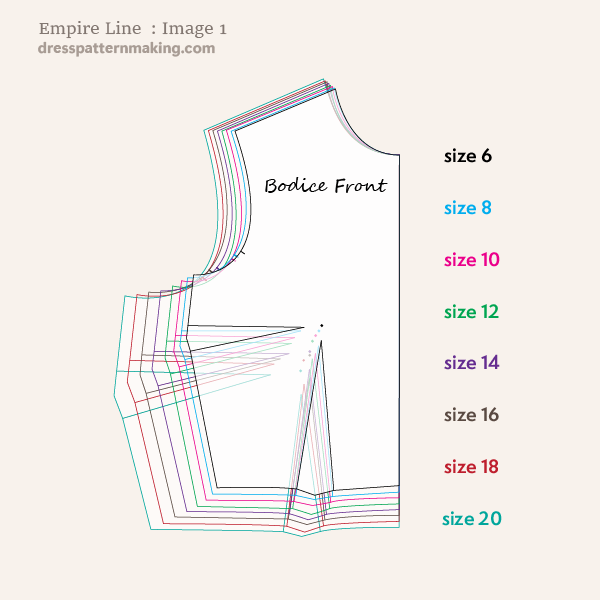Grading
Pattern Grading is a technique for creating different sizes of a finished pattern. The initial pattern is created in a base size (not the smallest size), usually a size 10 or size 12. Once the pattern is perfected, the pattern is then made in the other sizes by increasing or decreasing the pattern at set (or cardinal) points. There are grading rules to determine how much the pattern is enlarged/decreased at each cardinal point. Grading allows the one pattern to be made, then sized up and down, rather than having to remake the pattern in each size from the relevant size Block.
Example
Image 1: This graphic shows how sizes increase from sizes 6 - 20 for the Bodice Block Front.

This example is taken from Bodice Blocks available on this website, to scale. This shows how sizes increase from sizes 6 - 20 for the Bodice Block Front. (This example is taken from Bodice Blocks available on this website, to scale). The measurements increase at certain points in certain increments, though those increments may change at given sizes (e.g. the bust increase is 1 inch from size 6 to 8, but then 1.5 inches to size 12, then 2 inches thereafter). The increases at other cardinal points are at different percentages - e.g. the increase in the Center Front is .25 inch.
To make all these blocks you could either make each one individually, or you could make the base size and then use the process of grading to make the other sizes. Grading is done by establishing a point of reference, or a zero point, for every pattern piece, then all increases (or decreases) are made respective to that zero point. The measurement is increased/decreased at each cardinal point by the relevant amount. Grading can be done by either computer-based system or manually.
